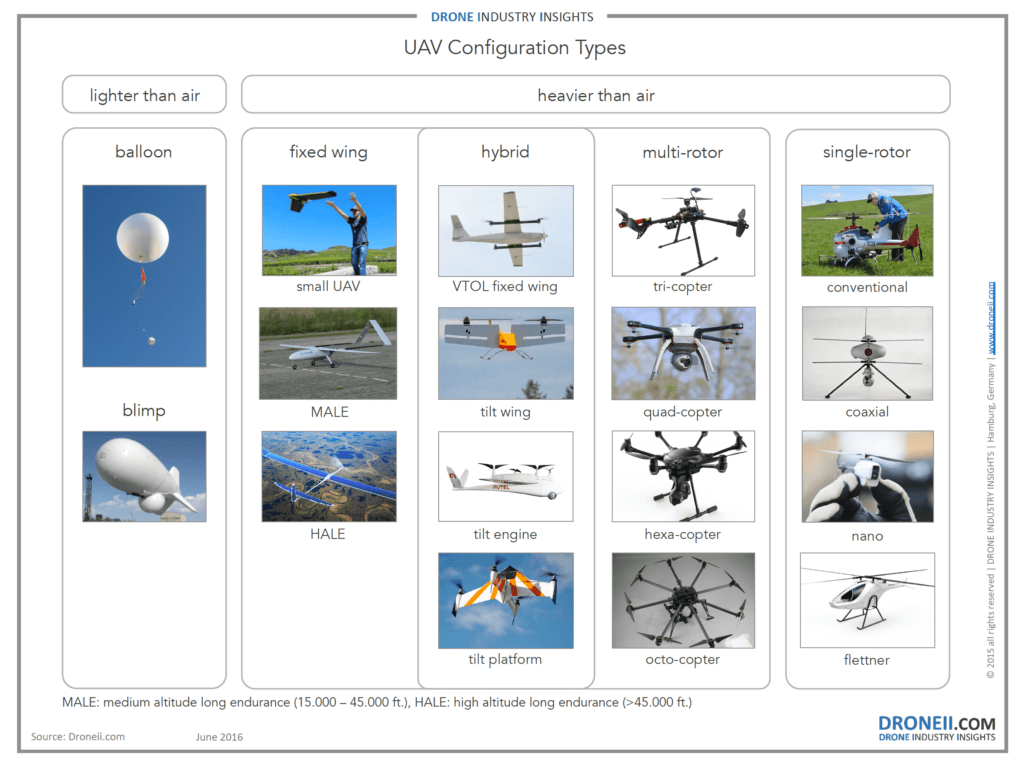Guest post by Kay Wackwitz, Drone Industry Insights —
Everyone is doing something with drones today. If you want to check out what could be in it for you, this article is a must-have! Here you will find what’s happening today, what’s out there, what’s necessary and last but not least, what’s possible.
If you want to start your own drone service operation from scratch you are confronted with loads of decisions, but usually with only little experience in this new and quickly developing industry.
To get yourself familiar with this technology and its’ advantages we created the Drone Business Development Guide for you as a point of departure. It comprehensively discusses the essential topics that are necessary to consider for your drone operation, such as mission definition, legal situation, planning and execution, hardware and technology are considered.
“Drones provide great possibilities” – but what does that mean exactly and in numbers? Without a doubt, drones give you the chance to do things you weren’t able to do before or do them more efficiently. However, to maximize the advantages of your drone operation it is not advisable to trail-and-error your way up to a professional service – what you want is to get it right from the start.
Where to start? At the end!
Since drones are (usually) flying cameras you can say theses platforms are nothing else but large movable tripods. The job of a tripod is to provide clear and rigid pictures from a certain position at a specific angle.
You need to ask yourself, what is your desired result? Do you want a 3D model, a picture, a movie or a geo-referenced set of pictures? Make sure you define your goal as precise as possible, since this will define the software providing this result. This in turn will define the payload you will have to choose and finally this will define your platform – your tripod.
1) Make or Buy
The first and maybe most important question is whether to run your own drone business or to subcontract it to a professional service provider. It is not just a short-term budget decision – in some cases it can be the better choice all the way. Check costs and efforts for each application thoroughly before you buy hardware and send your staff on trainings.
2) Legal
The key element for operational success is not just defined by hardware, software and advanced products, it largely depends on local regulations. Before searching for appropriate platforms, hold your horses (again) and check out the applicable regulatory body, learn what types of operations are allowed and – most important – which requirements must be fulfilled.
3) Mission and Environment
“The UAS follows the mission” – this slogan should be considered in every phase of your drone service development. After defining your aims and detailed objectives you can then focus on the technological aspects and implementation.
Do you want to fly at night, in rain or under icy or tropical conditions? Check what material is available to operate under these conditions and which specific insurances and training are necessary.
4) Payload and Software
It happens all the time, that people start with buying a turnkey platform and then realize the system is not suitable to supply high quality results. Choosing the right payload (scanner, camera, sensor, etc.) and appropriate software might take a few iterative loops but this will certainly pay off as you move along.
5) Platform
Finally you get to choose a platform. After defining all legal aspects, your mission, the operation environment, as well as your payload and software you still have the chance to subcontract all of this to an external service provider or you buy one yourself.
The UAV market provides a vast diversity of platform designs, components and equipment. Thoroughly consider which flight control system, vehicle design (fixed-wing, copter, hybrid) and energy source (gasoline, battery, hybrid-system) suits your needs best. Again, being clear about you specific mission is a precondition for you to pick the right vehicle and bring your drone business on track.
For details and more see the free Drone Business Development Guide available on www.droneii.com.
This is the start to a series of reports covering specific applications (in inspection, mapping, agriculture, construction etc.) and accompanying the entire value-chain.
We compare the traditional method of each use-case with the drone-supported method. Thereby we outline the true leverage of drone technology to a specific use case – as always data-driven and independent.
Source link
 Unmanned Aerial Vehicle The latest drone news
Unmanned Aerial Vehicle The latest drone news




